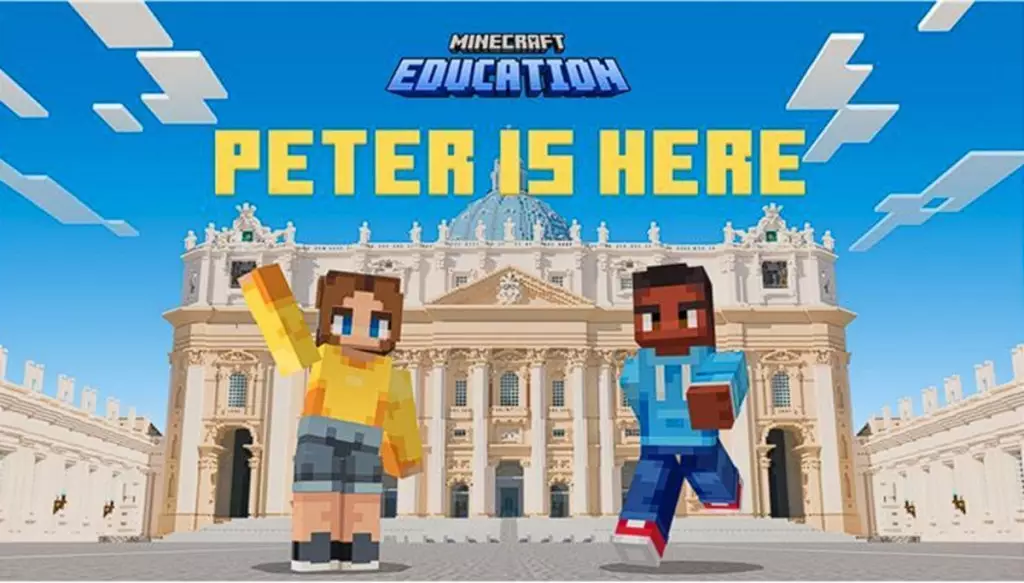In a world increasingly driven by technology, innovative educational tools are paramount to engaging the younger generation. Recently, a remarkable initiative called “Peter Is Here: AI for Cultural Heritage” emerged, combining the universal appeal of Minecraft with the timeless grandeur of St. Peter’s Basilica in the Vatican. For the first time, students can immerse themselves in the role of caretakers, actively participating in a digital restoration of this historical marvel. This collaboration between Microsoft and the Vatican aims to bridge history and technology, creating an interactive learning experience that can redefine how we perceive cultural preservation.
Interactive Gameplay: A Journey Through Time
What distinguishes “Peter Is Here” from traditional classroom setups is its innovative gameplay structure. Structured in two distinct modes—Restoration and Exploration—the program provides a unique approach to learning. In Restoration Mode, learners assume the responsibilities of the Sanpietrini, the actual team dedicated to maintaining and preserving St. Peter’s Basilica. Far from being mere observers, students engage in hands-on activities, using simulated AI tools to assess damage and make essential repairs. This approach allows them to witness the immediate effects of their decisions, instilling a deeply personal connection to cultural heritage.
By traversing through different historical eras—ranging from 75 AD to 1626 AD—students gain insight into architectural evolution and historical contexts. The immersion deepens as they interact with the environment, experiencing firsthand how different styles and construction methods have emerged over time. This layered learning not only engages students but cultivates their sense of stewardship for historic monuments.
The Role of AI: A Technological Backbone
“Peter Is Here” robustly integrates artificial intelligence, demonstrating how modern technology can aid in cultural conservation. The program begins with an AI-enhanced digital twin of St. Peter’s Basilica. Photogrammetry techniques allow for a highly detailed and accurate representation of the structure, which can be analyzed and manipulated in-game. This data processing provides insights that go beyond the gaming experience, merging digital imaging techniques across various sectors, including urban planning and environmental science.
Through simulated AI, students can utilize digital tools like block scanners and retrievers, mirroring real-world practices employed by preservationists. This not only makes the experience educational but also relevant; the tools echo those used by contemporary professionals dedicated to preserving our cultural legacies. Integrating AI into the curriculum dovetails perfectly with current educational trends, enhancing students’ digital literacy.
From Restoration to Discovery
Once restoration tasks are completed, the learning experience transitions into Exploration Mode. Here, students explore fully restored areas of the Basilica, turning them into historians eager to unearth hidden narratives and artifacts. The environment, rich in interactive elements, allows students to delve into the intricacies of architectural design while engaging with NPCs that offer insights and stories of significant historical figures like Michelangelo and Bernini.
This seamless transition emphasizes the interconnectedness of restoration and exploration, underscoring the vital role that preserving the past plays in comprehending its significance. Students are not just passive players; they are explorers dedicated to understanding the cultural significance of their environment. The interactive elements encourage curiosity and critical thinking, essential components of the modern educational landscape.
Empowering Educators with Resources
Beyond the immersive in-game experience, “Peter Is Here” provides substantial resources for educators, including structured PowerPoint presentations and student workbooks. These materials enable teachers to effectively integrate the lesson into their curricula, ensuring that students not only engage with the content but also grasp its broader context. As classrooms gravitate towards integrating history with tech, the availability of these resources is crucial for educators aiming to captivate student interest.
Engaging students through a hands-on exploration of St. Peter’s Basilica encapsulates the essence of cross-disciplinary learning, merging the arts, history, and technology into a cohesive unit. In a world where traditional teaching methods often struggle to spark enthusiasm, the incorporation of AI and gaming offers a refreshing reprieve, inviting students to actively participate in their education rather than simply absorb information passively.
A Future for Heritage Preservation
The initiative does not just teach students about St. Peter’s Basilica; it cultivates a new generation of cultural guardians. Upon completing their journey, students receive certificates that celebrate their role in cultural preservation, reinforcing the importance of safeguarding our shared heritage. As the program highlights, the future of heritage preservation can be exciting and engaging when intertwined with technology.
“Peter Is Here” champions the idea that cultural heritage should not only be experienced but actively preserved, serving as a reminder that the responsibility of safeguarding history lies in the hands of future generations. By training students to embrace AI-driven restoration, we illuminate a pathway to protecting centuries of human creativity and culture. The key lies in inspiring curiosity—one block at a time.

